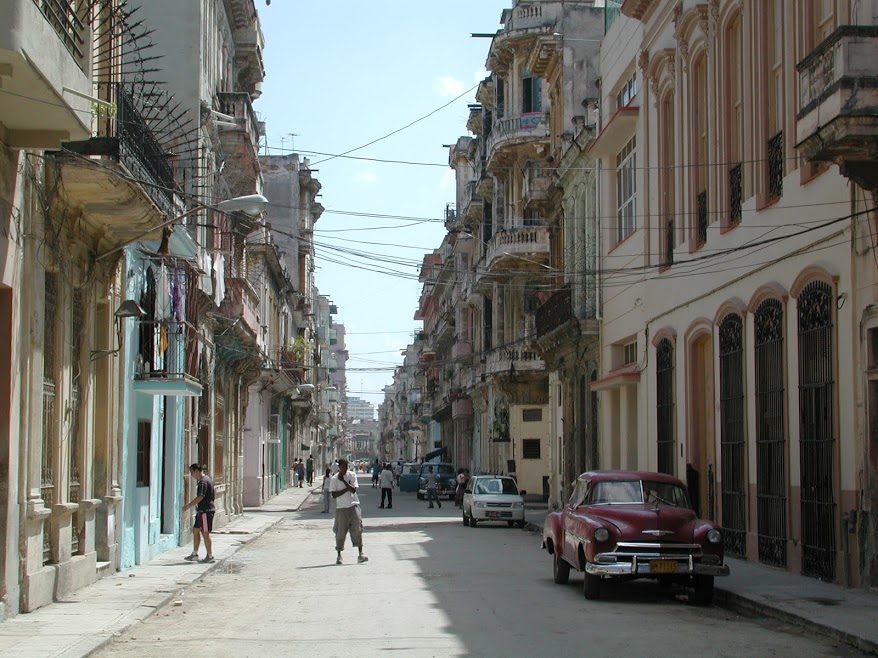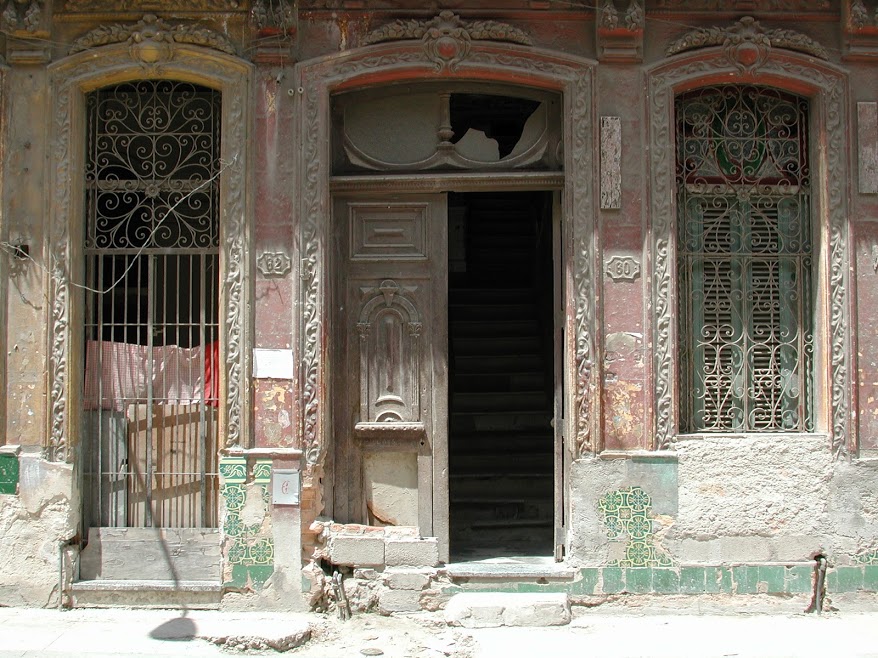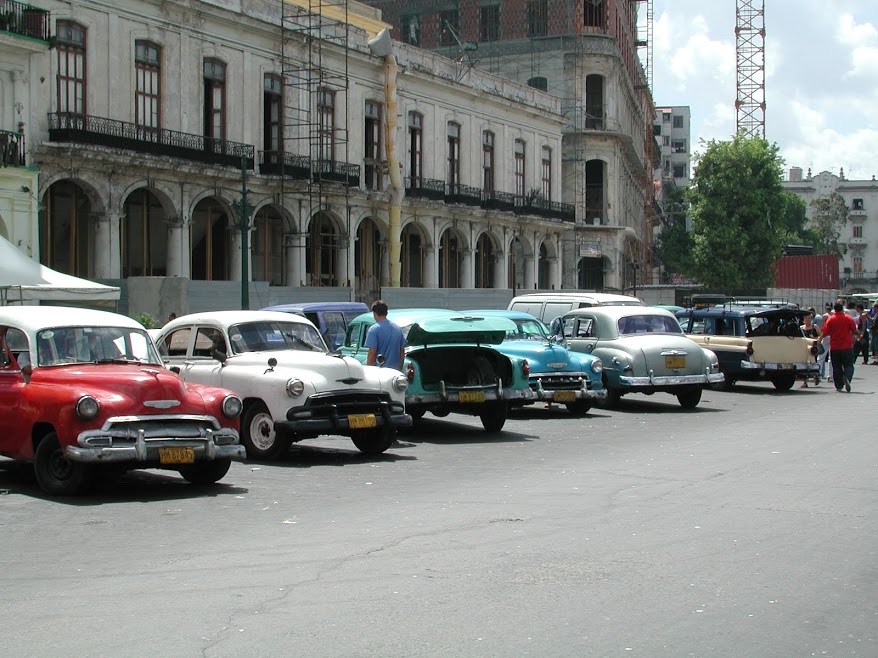La Habana, Cuba
19 March 2002Havana is a city of contradictions. It’s simultaneously one of the most beautiful and most run down cities in the world. It’s hard to imagine how things could be any worse, or any better given the Cuba’s political past and present.

Havana, along with the rest of Cuba, is the way it is almost purely because of politics—some of the most complex politics on the planet. If you like history or politics, Cuba is for you. Cuba’s troubled history begins long before the Cuban Missile Crisis, or even before the Revolution of 1959. Ever since Christopher Columbus set foot on the Isle of Cuba on October 29th, 1492, one nation or another has been fighting over the country. For over half a millennium now, politics have affected almost every aspect of life in Cuba. It’s amazing that despite all this, Cuban culture is felt worldwide through its music, dance, and artistry.
Fast Facts
Before we get started, here are a few quick facts to clear up a few common misconceptions about Cuba:
- The US embargo was put in place on October 19th, 1960, two years before the Cuban Missile Crisis. It was the result of the US Eisenhower Administration’s plan to overthrow Castro. This was the result of Cuba nationalizing a lot of property sold to the US by Cuba’s former dictator, Fulgencio Batista. In 1963, after the end of the Missile Crisis, the Kennedy Administration imposed a travel ban on US citizens, preventing them from visiting Cuba. Here’s an Economic Embargo Timeline, if you’re interested.
- In 1959, a group of Cuban revolutionaries, including Fidel Castro and Che Guevara, led a popular uprising to overthrow Fulgencio Batista, the totalitarian dictator who led Cuba from 1934 to 1959. Under Batista, more than a third of the land in Cuba was sold off to US interests. In several cases, teachers who worked to alphabetize rural villages were tortured and killed by Batista’s private police force, for fear that a literate population of farmers would be more likely to favour local land ownership, and oppose the dictator. Cuba is now a communist country, and Castro is the elected head of state. Elections are supervised by international monitors. They work very differently from other western electoral systems, however, since there is only one party. Like Canadians, Cubans elect local representatives, who select a party leader. In practise, Castro has been re-elected President by party officials in every election since the Revolution. Here’s some more information on elections in Cuba.
- Today, Cuba’s population is highly educated. The current literacy rate is approximately 97%—the same as Canada’s. Before the revolution, the overall literacy rate was 23.6%. Castro’s guerrilla manifesto of 1957 included an immediate literacy and education campaign, with the slogan ‘Revolution and Education are the same thing.’
- It’s illegal to form a party other than the Communist Party, and people live under fairly strict supervision by the government compared to most western nations. The movement of Cubans is restricted by the government. The Canadian Department of Foreign Affairs maintains a fact page on Cuba, as does the CIA in the United States.
- Cuba’s media is not entirely restricted, and Cubans can tune in to Miami and Mexican radio stations. The national newspaper, Granma is published by the Communist Party and is available online in several languages.
I was going to include a quick whirlwind tour of the history of Cuba here. I started on it, but by the time I got to the late 19th century it was already ten paragraphs long. Instead, if you want an excellent point-form history, have a look at A History of Cuba. If you want something more in depth, specifically focusing on US-Cuban relations, the multi-volume set A History of Cuba and its relations with The United States by Philip S. Foner is excellent.

Arrival in Havana
The flight to Cuba was probably the craziest flights I’ve ever experienced. We boarded the ancient, Soviet-built Cubana Yak-42 jet in Cancún and took our seats. The first thing we noticed as we sat down was that the safety instruction cards were printed in Russian. The second, and more alarming thing we noticed was that smoke was slowly filling the cabin. The flight attendants assured people that it was just steam, and that it was totally normal. By the time we landed in Cuba, The cabin was filled chest high and we couldn’t see our knees anymore. We got off the plane as quickly as possible, were packed into a rickety old East-German bus and carted off to immigration. Once in Havana, we checked into Hotel Flamingo where we stayed for our first two days while we explored Havana. Across the street were a bunch of featureless, utilitarian, crumbling apartment buildings, which are apparently identical to the ones that were built across the Communist Block countries during the Soviet era. You’re surrounded on all sides by relics of the Soviet era: East German and Polish buses, Russian radios and record players, and tons of North Korean equipment. It’s fascinating to see a country that exists almost entirely apart from the US. When it comes to the States, it’s as though time stopped in 1959. The only Chevys and Buicks to be seen are 1950s models. All new cars are Ladas, Yugos, Polski Fiats, or Chinese and North Korean imports. Supposedly push-by shootings from Ladas aren’t as big a problem here as they are in Russia.
Old Havana La Habana Vieja is something amazing to see. Walking down the streets of Old Havana, you’re surrounded by some of the most incredible architecture you’ve ever witnessed. What’s even more incredible is that it’s crumbling all around you. Ornate gargoyles and balconies have decayed and collapsed with age; the paint is peeling, and everything is covered in a thick layer of dirt and grime. Broken windows are everywhere, and yet people continue to live in these buildings that elsewhere in the world would have long since been condemned.
Another thing not to be missed in Havana is sitting in the park in front of the Museo de la Revolución and eating freshly roasted peanuts out of a rolled up newspaper. For one peso, you can buy salted peanuts from street vendors, rolled up in an old copy of a page from Granma, and sit back and watch kids play baseball in the street.
Baseball is everywhere in Cuba. You can’t turn around without seeing a game going on. Baseball equipment, on the other hand, is hard to come by. This doesn’t stop anyone from playing the game, however. A rock wrapped in rubber bands makes a pretty decent baseball, and we saw a lot of kids who could hit some amazing runs with a broom handle baseball bat. If you visit Cuba, something that’ll make any kid’s day is a baseball. Pencils and pens make nice gifts too.

Dollars and Pesos
There are two things that everyone who visits Cuba should do. The first is to experience live Cuban music, which you can read about in the Trinidad section. The second is to convert some dollars to Cuban Pesos. Cuba has three official currencies: Cuban Pesos, US Dollars, and Cuban Convertible Pesos. The Cuban Convertible Peso was introduced to reduce the dependency on actual US dollars, but are worth exactly one dollar in Cuba, and exactly zero dollars off the island. Cuban Pesos are a soft currency, and as such, have no practical value as an exchangeable currency; however, exchanges do happen at wildly fluctuating rates. We got 26 pesos to the dollar. Cuba has two economies that don’t overlap even remotely. Hard-currency stores charge US prices in US dollars and sell high-end items. Bottled water is about $1.00 a bottle, soap is $0.50 a bar, and meat and cheese are similar in price to what they would be in Canada or the US. However, Cubans are paid in pesos at a rate of about 200-400 pesos a month — about 8 to 16 dollars. That makes a bottle of water worth somewhere around 10% of your monthly paycheque. Try the math with your paycheque. Soft currency shops sell local goods, such as fruit and vegetables, for pesos.
The reason you should convert some money is that finding a place to spend your newly acquired pesos will force you to discover a whole part of Cuba you might otherwise never have seen. Cubans buy things in soft currency at markets or shops that sell in pesos. The items you can buy for pesos are universally locally produced items such as locally farmed foods, small pizzas baked on the street in oil drums converted to wood ovens, and some ice cream. A pizza, which is basically a piece of bread with a little tomato sauce, some oil, and bit of salt on it, sells for 3 pesos, which is about 12 cents US. The reason it’s so cheap is that peso goods are subsidised by the work you do for the state. Basic food staples such as beans and rice are part of your government supplied rations, and can be obtained with your ration card at certain shops. When you can find it, food sold on the street is usually in pesos. Food in paladares¹, hotels, and touristy places is almost universally in dollars.

The Rich and the Poor
The one thing that struck us immediately was the uniformity of income in Cuba. In México, there are two extremes: the extremely rich and the extremely poor. The middle class is tiny compared to Canada, where the middle class is the norm. In Cuba, almost everyone lives in something that is not exactly poverty, but at the same time they have basically no buying power. They have what the government gives them, and little else. The income difference between a street sweeper and a specialist doctor is about $7 a month vs. $15 a month. No matter how you cut it, the $8 difference doesn’t buy much. It’s hard to get imported goods no matter what, and what you can get is often on the black market. Although under communism employment is universal and housing is provided by the state, there are still people who turn to begging because it can be far more lucrative than work in a factory for $8 a month. As a result of the incredibly tiny incomes in Cuba, jineteros² have become more numerous, and will follow you wherever you go, trying to drag you to a restaurant or shop where you’ll spend your money. A lot of people on the street beg for soap or toothpaste when the police aren’t watching. One man told us he’d do anything, even get down on his knees and beg if it would make a difference.
Given all this, was the trip to Cuba worth it? Without a doubt. We met some absolutely wonderful people, and learned a ton about Cuban history and politics. The government isn’t the oppressive dictatorship many people would like to believe, and it’s certainly an improvement over Batista’s brutal dictatorship; however, things could certainly be a lot better than they are, and Castro isn’t exactly known for his spectacular record on civil liberties. The Cubans we met were friendly and welcoming, not to mention incredibly good dancers. When we ran into difficulty getting cash out of our Mexican bank accounts due to the embargo, one family we stayed with offered to reduce our room rate, and give us a cheap ride to the airport so we didn’t have to pay the taxi fare. Falling asleep to live Cuban music every night was worth the trip alone.
Glossary
- Paladar: a small independent restaurant. One of the allowed forms of capitalism in Cuba.
- Jinetero: Literally a ‘jockey.’ Jineteros will approach you and offer to show you a restaurant or store. In exchange, the restaurant charges you extra for your meal and the jinetero gets to keep the surcharge.